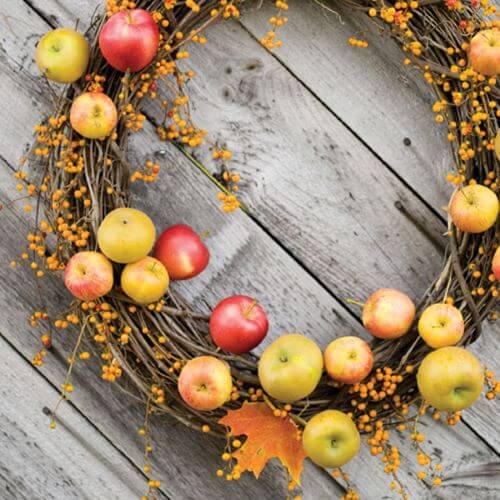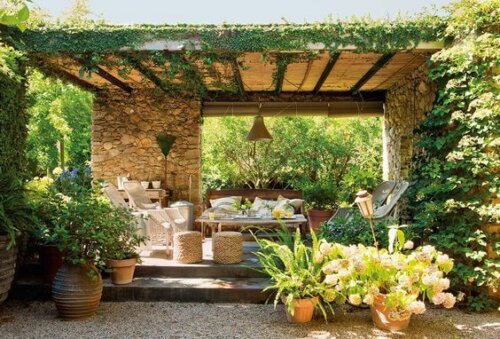Canes and Trellises for Your Plants
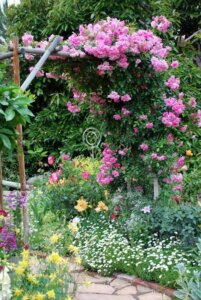
If you want your plants to grow properly, canes and trellises are ideal, as they provide the support and give them elegance.
Climbing plants, thin-stemmed plants, and creeping plants often need support to grow in all their splendor and, avoid bending or splitting.
The basic difference between canes and trellises is that canes are usually straight, spiral, arched, or artistic sticks, while trellises are structures that form a lattice.
The different types of canes and trellises
Below, we’re going to show you the different types of canes and trellises that currently exist on the market. You won’t have any trouble finding them, as they’re sold in most garden stores.
Bamboo canes
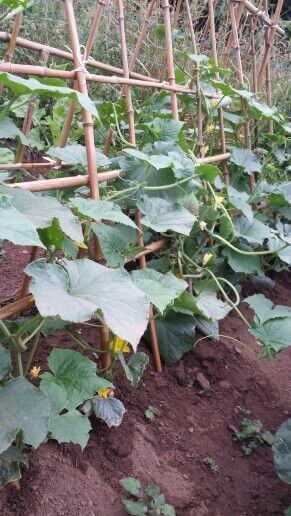
Natural canes, such as those made of bamboo, blend into the foliage because they’re thin sticks that resemble plant stems. Therefore, they’re ideal for young vegetable plants.
Depending on the size of the plant, you can place one or more cane in the flowerpot to support the branches. For example, they’re great for indoor hydrangeas and poinsettias.
Moss canes
These are generally thick rods covered with natural or artificial moss. Since they’re watered at the top to keep them moist, they’re perfect for plants with aerial roots.
These plants absorb moisture, as well as the nutrients from the irrigation water when fertilizers are added. People usually use them for philodendrons and, also, golden pothos.
Plastic or metal canes
As they’re made of plastic or plasticized metal, these are strong and very durable. You can find them as spirals, arch-shaped, or shaped as decorative figures. Also, people usually use them for ivy, golden pothos, and creeping plants.
Trellises

Trellises come in various shapes, sizes, and materials, including plastic and cane. They’re structured supports that work very well for most climbing plants.
Some plastic trellises are extendible, meaning they grow along with the plant. It’s a good idea to put the plant on the trellis when it’s young so the trellis can guide it.
Accessories for canes and trellises
Clips are accessories for canes and trellises. People mainly use them to tie the stems of the plants to these supports. Below, we’re going to recommend two types:
Raffia
This is the most popular material to support vegetable plants. As it’s natural, it doesn’t damage the plant. However, it’s advisable not to adjust it too much.
You can use this material to fix the stems to the cane or trellis so it can guide them as they grow.
Plastic wire
As they’re more resistant than raffia, these are best for plants with heavy branches, to fix them to moss canes. You can find plastic wire in rolls and experts recommend it rather than copper wire, which can damage the plants.
How to position canes and trellises
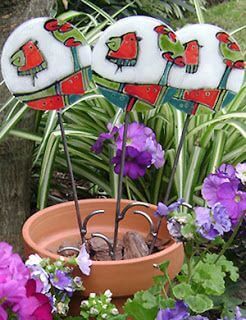
Below, we’re going to share four simple steps so that you can correctly position canes and trellises. As a result, your plants will grow better!
- Firstly, place the cane in the pot and fix it with subsoil. To do so, place a subsoil base at the bottom of the pot. Then, bury the cane in the middle of the pot. After that, surround it with dirt until you fix it completely.
- Now place the plant around the cane and fill it with subsoil. Plant the plant that’s attached to the cane and finish filling the pot. Make sure the subsoil is well compacted.
- Then, twist the plant around the cane. Once it’s firmly in the pot, guide the stem so that it’s firmly attached. Now fix it with raffia or plastic-coated wire. Next, water the subsoil and spray the cane.
- Position the trellis and then the plant. Choose the best trellis for your plant and place it in the pot, following the same procedure as with the cane. Arrange the stems following the structure. It doesn’t matter if they don’t cover it completely; they’ll do so as the plant grows.
In short, now you know that, in addition to basic care, it’s a good idea to provide your plants with these special supports so that they grow to their full potential.
If you want your plants to grow properly, canes and trellises are ideal, as they provide the support and give them elegance.
Climbing plants, thin-stemmed plants, and creeping plants often need support to grow in all their splendor and, avoid bending or splitting.
The basic difference between canes and trellises is that canes are usually straight, spiral, arched, or artistic sticks, while trellises are structures that form a lattice.
The different types of canes and trellises
Below, we’re going to show you the different types of canes and trellises that currently exist on the market. You won’t have any trouble finding them, as they’re sold in most garden stores.
Bamboo canes

Natural canes, such as those made of bamboo, blend into the foliage because they’re thin sticks that resemble plant stems. Therefore, they’re ideal for young vegetable plants.
Depending on the size of the plant, you can place one or more cane in the flowerpot to support the branches. For example, they’re great for indoor hydrangeas and poinsettias.
Moss canes
These are generally thick rods covered with natural or artificial moss. Since they’re watered at the top to keep them moist, they’re perfect for plants with aerial roots.
These plants absorb moisture, as well as the nutrients from the irrigation water when fertilizers are added. People usually use them for philodendrons and, also, golden pothos.
Plastic or metal canes
As they’re made of plastic or plasticized metal, these are strong and very durable. You can find them as spirals, arch-shaped, or shaped as decorative figures. Also, people usually use them for ivy, golden pothos, and creeping plants.
Trellises

Trellises come in various shapes, sizes, and materials, including plastic and cane. They’re structured supports that work very well for most climbing plants.
Some plastic trellises are extendible, meaning they grow along with the plant. It’s a good idea to put the plant on the trellis when it’s young so the trellis can guide it.
Accessories for canes and trellises
Clips are accessories for canes and trellises. People mainly use them to tie the stems of the plants to these supports. Below, we’re going to recommend two types:
Raffia
This is the most popular material to support vegetable plants. As it’s natural, it doesn’t damage the plant. However, it’s advisable not to adjust it too much.
You can use this material to fix the stems to the cane or trellis so it can guide them as they grow.
Plastic wire
As they’re more resistant than raffia, these are best for plants with heavy branches, to fix them to moss canes. You can find plastic wire in rolls and experts recommend it rather than copper wire, which can damage the plants.
How to position canes and trellises

Below, we’re going to share four simple steps so that you can correctly position canes and trellises. As a result, your plants will grow better!
- Firstly, place the cane in the pot and fix it with subsoil. To do so, place a subsoil base at the bottom of the pot. Then, bury the cane in the middle of the pot. After that, surround it with dirt until you fix it completely.
- Now place the plant around the cane and fill it with subsoil. Plant the plant that’s attached to the cane and finish filling the pot. Make sure the subsoil is well compacted.
- Then, twist the plant around the cane. Once it’s firmly in the pot, guide the stem so that it’s firmly attached. Now fix it with raffia or plastic-coated wire. Next, water the subsoil and spray the cane.
- Position the trellis and then the plant. Choose the best trellis for your plant and place it in the pot, following the same procedure as with the cane. Arrange the stems following the structure. It doesn’t matter if they don’t cover it completely; they’ll do so as the plant grows.
In short, now you know that, in addition to basic care, it’s a good idea to provide your plants with these special supports so that they grow to their full potential.



